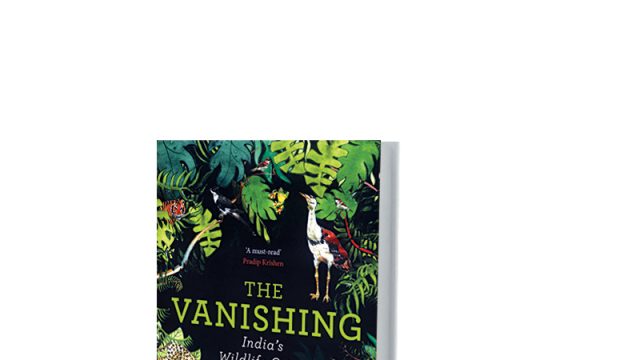India is a nation on the move and that means industry, new infra-structure so that goods can cross the country at record speed, and dams for agriculture. The result is that environment takes a back seat and the ministries that are supposed to protect India’s sustainability find themselves back- tracking in the face of political manoeuvrings to increase industrial resources and fly the ‘Make in India’ banner. The most recent example of this is the sanctioning of the Ken-Betwa river link which, if carried out, will reportedly submerge 53 sqkm of the Panna Tiger Reserve along with the tigers that live there. The irony is that these tigers were brought to Panna in 2005 after they had been declared extinct there, with government support.
Prerna Singh Bindra’s The Vanishing is a meticulously charted process of the destruction of India’s forests and the resultant threat to wildlife.
There are many cases where material gain overtakes environmental demands, overlooking the fact that clean water and air originate from the forests, where trees act as oxygen sinks. Bindra has served on several boards that were supposed to work with the government to prevent environmental crises only to discover that the powers that be, can often turn a deaf ear.
She writes a tale of struggle where the only environment- concerned politicians were Indira Gandhi and her son Rajiv, who banned hunting and took sustainability into account. Even a relatively open-minded environmental minister was forced to buckle down to a PM’s demand for more coal mines, and sign away trees. Add to that the fact that if one government sanctioned something, the next body in power undid the sanction.
The reason for this, Bindra writes, is that 20% of India lies under forest cover and this is land that no one can lay claim to. As a result, it is easily written off, and factories and roads take over from trees. Speeding trucks run over snakes, leopards and any other animal that attempts to cross a stretch of concrete populated by heavy metal juggernauts. Elephants are mowed down by trains in Bengal—though there was an attempt to stop night trains that was temporarily successful. However, when it comes to an issue involving animals and human beings, Homo sapiens win hands down. As someone once said, animals and trees have no voting rights.
Bindra’s book is peppered with the acronyms of organisations created to assess India’s wildlife scenario. But most of these, like the EIA, have no idea of India’s flora and fauna, once listing two tiger species where there was only one and a ‘pied brown hornbill’ which did not exist. It is dense with facts and figures, and very personal in its take on the subject.
Where solutions are concerned, Bindra mentions that mixed-use plantations have been helpful in making better use of tiger corridors, not to mention village relocation. What makes the positives negative is the fact that, in a largely impoverished country like India, most are out for short-term gain. For example, it’s been alleged that some who live around Pilibhit Tiger Reserve are feeding their elders to tigers in return for compensation, thus breeding a generation of man-eaters and putting themselves under threat.
The author does, however, throw in some hopeful anecdotes about the people who live on the fringes of forests. Conflict with nature in many cases is inevitable but here, both animals and humans have their own ways of coping. The elephant guards of Odisha, for instance, have found their own method of protecting both, people and elephants. So can others, if they try.




